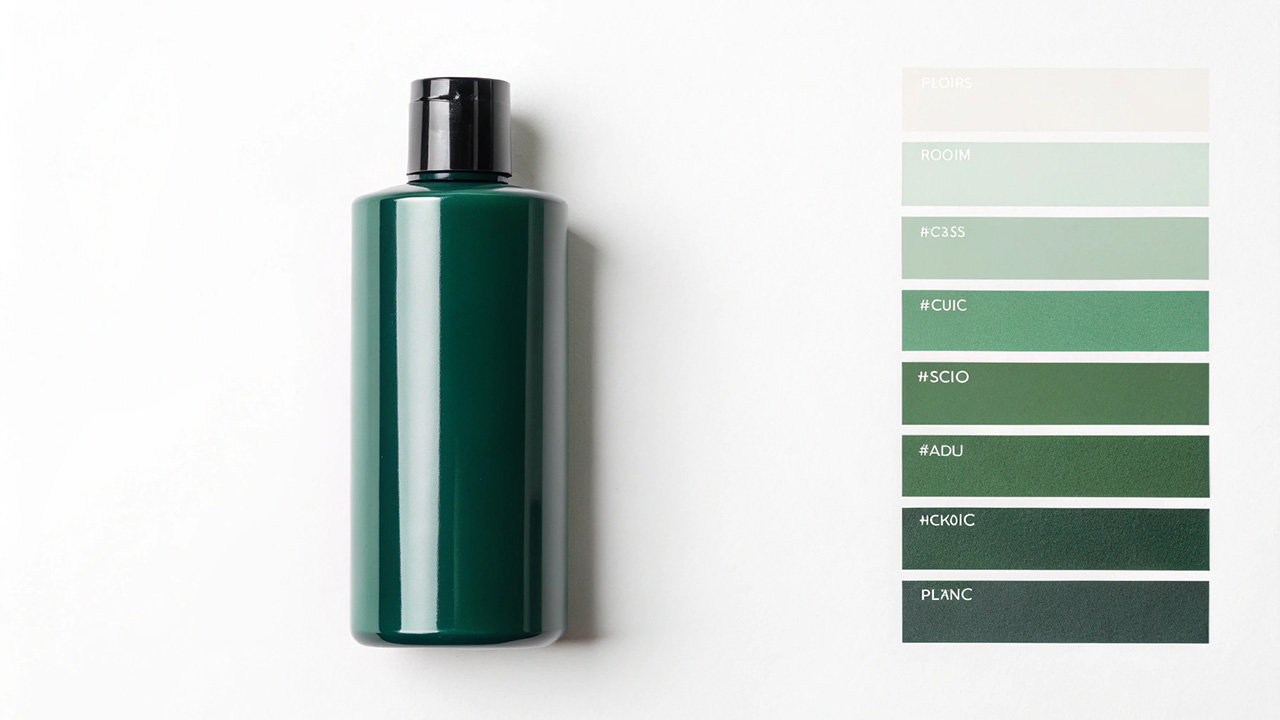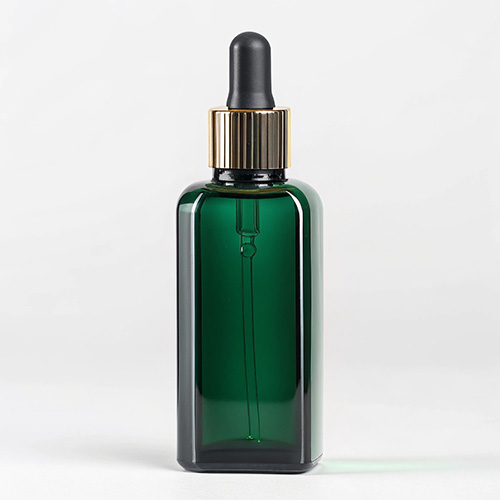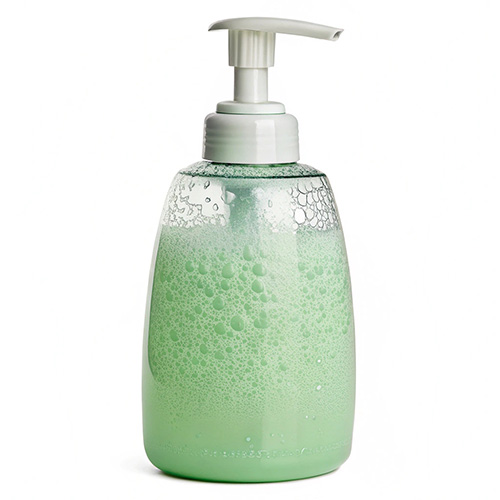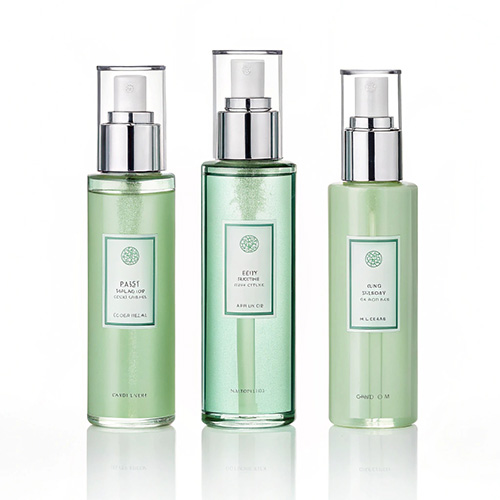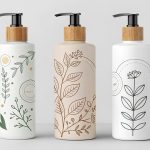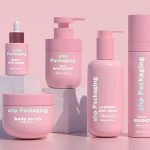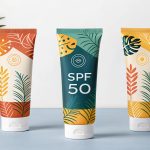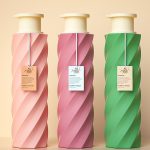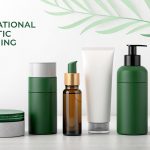In the competitive world of cosmetics, packaging is more than a protective shell—it’s a silent storyteller. Among the myriad of design elements, color stands as a critical pillar in shaping brand identity and consumer perception. Green, in particular, has emerged as a universal favorite, symbolizing nature, luxury, and sustainability. For cosmetics brands aiming to resonate with discerning consumers, integrating culturally significant greens into cosmetic bottle design offers a unique opportunity to merge tradition with modernity. This article explores seven globally recognized shades of green, their historical symbolism, and actionable strategies for incorporating them into high-impact packaging solutions.
1. Wasong Green (#6A8D6D): Harmony in Minimalism
Cultural Roots: Originating from traditional Chinese architecture, Wasong Green adorns ancient temple tiles, embodying tranquility and natural harmony. Its muted, earthy tone evokes a sense of calm—a perfect match for skincare brands promoting mindfulness or clean beauty.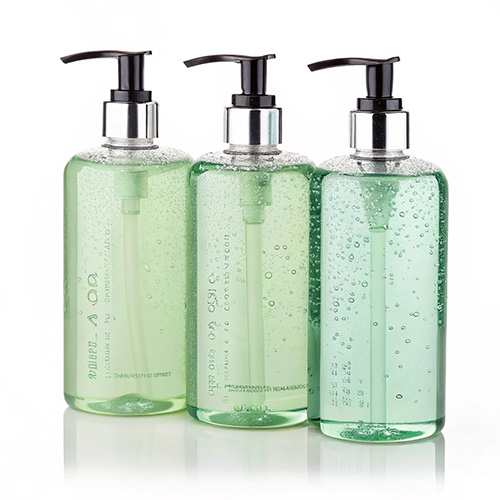
Application in Cosmetic Bottles:
- Material Choice: Use frosted glass or matte-finish bioplastics to replicate the soft, weathered texture of ancient tiles.
- Design Aesthetic: Pair with minimalist typography and ergonomic shapes for a “less is more” appeal.
- Brand Alignment: Ideal for serums or facial oils marketed as “ritualistic” or “meditative.”
2. Jade Green (#019C74): Opulence in Sustainability
Cultural Roots: Revered in Chinese culture for symbolizing nobility and longevity, Jade Green’s deep, lustrous hue has adorned ceremonial objects for millennia.
Application in Cosmetic Bottles:
- Luxury Craftsmanship: Opt for heavy, sculpted glass bottles with jade-like translucency. Techniques like double-walled molding or metallic foiling can mimic the gemstone’s veining.
- Sustainability Angle: Highlight recycled glass or biodegradable resin to align with eco-conscious values without compromising luxury.
- Product Fit: Perfect for high-end fragrances or limited-edition skincare collections.
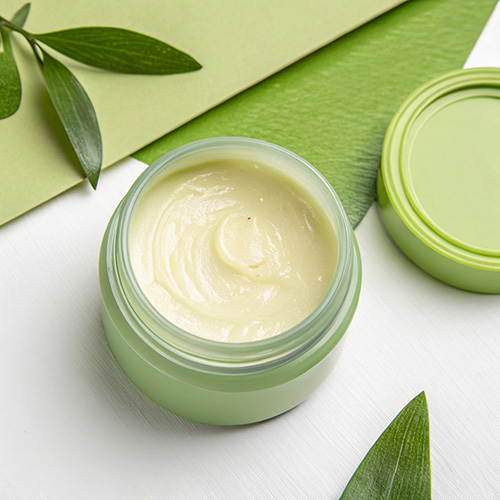
3. Official Green (#01502C): Authority Meets Elegance
Cultural Roots: A staple in Ming and Qing dynasty official robes, this dark green exudes power and tradition.
Application in Cosmetic Bottles:
- Structural Drama: Angular, geometric designs in matte ceramic or lacquered metal evoke regality.
- Gender-Neutral Appeal: Use for unisex grooming products like colognes or beard oils to convey sophistication.
- Narrative Integration: Add subtle embossed patterns inspired by historical seals or calligraphy.
4. Grass Green (#88B24D): The Pulse of Vitality
Cultural Roots: Universally tied to spring and renewal, Grass Green symbolizes growth across Eastern and Western cultures.
Application in Cosmetic Bottles:
- Youthful Energy: Pair with transparent PET bottles or recyclable aluminum for eco-friendly vibrancy.
- Interactive Labels: Incorporate seed-paper tags or QR codes linking to sustainability initiatives.
- Product Pairing: Ideal for refreshing toners, detox masks, or CBD-infused wellness lines.
5. Pastoral Green(#5DAA80): Idyllic Serenity
Cultural Roots: Evoking European countryside landscapes, this shade embodies rustic charm and simplicity.
Application in Cosmetic Bottles:
- Organic Textures: Use hand-blown glass with irregular imperfections or cork stoppers for an artisanal feel.
- Color Layering: Combine with cream or terracotta accents to mimic pastoral scenes.
- Market Positioning: Target “slow beauty” brands emphasizing natural ingredients and handcrafted processes.
6. Green Glaze (#02795F): Timeless Craftsmanship
Cultural Roots: A hallmark of Tang and Song dynasty ceramics, Celadon’s jade-like glaze reflects meticulous artistry.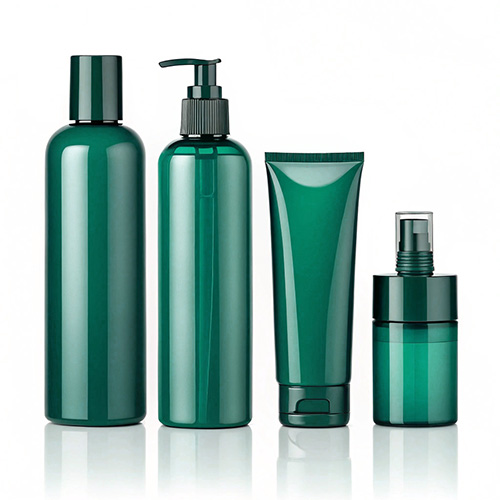
Application in Cosmetic Bottles:
- Material Innovation: Achieve the signature crackled effect via crystalline glazing on ceramic containers.
- Heritage Storytelling: Use packaging inserts to educate consumers about the color’s historical significance.
- Premium Positioning: Reserve for anti-aging lines or collector’s editions to emphasize heritage and quality.
7. Mars Green (#008C88): Bold Industrial Chic
Cultural Roots: Derived from chromium oxide, Mars Green gained prominence in the 19th century through Impressionist art and industrial applications. Its vivid, stable hue became synonymous with modernity and resilience.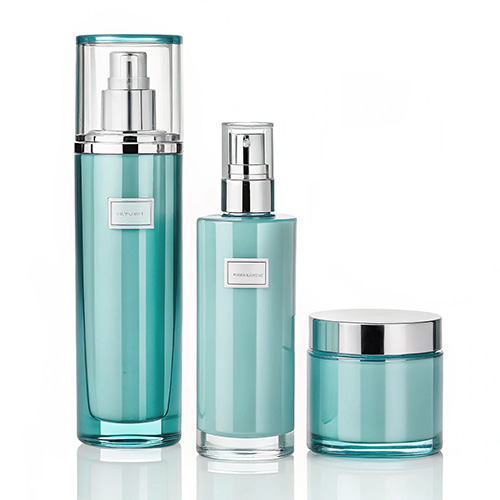
Application in Cosmetic Bottles:
- High-Impact Vibrancy: Use glossy, injection-molded plastic or lacquered metal to amplify its boldness.
- Genderless Appeal: Ideal for avant-garde makeup lines (e.g., eyeliners, nail polishes) targeting Gen Z consumers.
- Durability Focus: Highlight scratch-resistant coatings for travel-friendly packaging.
- Artistic Collaboration: Partner with contemporary artists to create limited-edition designs inspired by Impressionist techniques.
Strategic Insights for Cosmetic Brands
- Color Psychology: Leverage greens to evoke specific emotions—Wasong for calm, Jade for luxury, Grass Green for vitality.
- Sustainability Synergy: Pair green hues with eco-friendly materials (e.g., post-consumer recycled glass, algae-based plastics) to amplify brand ethos.
- Cultural Authenticity: Avoid appropriation by collaborating with historians or artisans to ensure respectful integration of traditional motifs.
- Technical Precision: Use Pantone references and digital prototyping to maintain color consistency across materials like glass, plastic, and labels.
Conclusion: Green as the Future of Cosmetic Design
As consumers increasingly seek authenticity and sustainability, green transcends trend status to become a cornerstone of cosmetic branding. By rooting cosmetic bottle design in cultural narratives and innovative materials, brands can craft packaging that resonates emotionally, ethically, and aesthetically. The seven greens explored here are not mere colors—they are bridges between heritage and modernity, waiting to elevate your next product launch.
